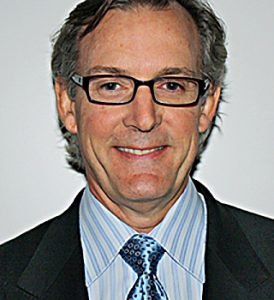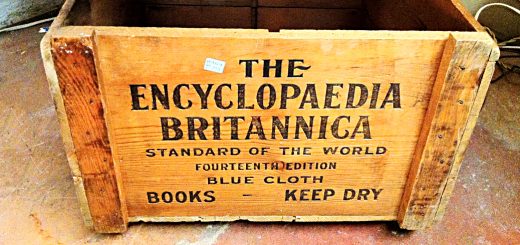Scott Ramsey – Low Risk Futures Trader

Today’s post is a profile of Guru investor Scott Ramsey, who appears in Jack Schwager’s book Hedge Fund Market Wizards. His chapter is called Low Risk Futures Trader.
This article is part of our ‘Guru’ series – investor profiles of those who have succeeded in the markets, with takeaways for the private investor in the UK.
You can find the rest of the series here.
Scott Ramsey
Scott Ramsey heads up Denali Asset Management, a hedge fund that he operates from the U.S. Virgin Islands.
He appears in Jack Schwager’s book Hedge Fund Market Wizards, where his chapter is called Low Risk Futures Trader.
Personal history
Ramsey dropped out of college as a mechanical engineering student with good exam scores to start futures trading, mostly in commodities and FX.
I am not saying I did the right thing, although in retrospect, it turned out okay.
He had taken an economics course in his junior year, and it changed his outlook on life.
- In engineering there are always right answers, but suddenly he was looking at shades of gray.
Reading the Wall Street Journal, he became interested in metals.
- He didn’t know about futures, so he began by buying over-the-counter metals (which was a very expensive way to trade).
By the time he was a senior – in 1979 – he had a quote screen in his apartment, and was up more than $10K (which would have paid for two cars at the time.
I couldn’t believe how easy it was to make money. I really had no idea what I was doing.
Ramsey ended up buying silver at $50, close to the all-time high.
- Then the Fed raised interest rates to fight inflation and the exchange raised silver margins.
- Silver fell back to $26 before it started trading again, and Ramsey had lost all of his profits.
He took a break, then he started trading futures.
- His first broker was a “churn ’em and burn ’em” guy, and the account didn’t last long.
Ramsey had always been at the top of his class in school, and found being one of the reported 90% who lose money trading futures to be a challenge.
Ramsey got a job as a phone clerk at the Chicago Mercantile Exchange.
- He soon realised that he had to be working in the trading pits, but in the meantime he worked as a commodity broker.
He was cold calling clients, giving them recommendations based on technical analysis (just basic chart patterns and moving averages).
- His clients did okay – they didn’t make much money, but they didn’t lose.
- He kept them alive by always using stops.
In 1982, Ramsey leased a seat on the IMM and began to trade from the floor.
- He expected that having first hand information about who was doing what would be very helpful, but he had to give up the screens he had in the office, and that meant he could only follow the one market.
- Being on the floor turned out to be a disadvantage, and he only stayed for six months.
It was like putting blinders [blinkers] on. I also very quickly learned that standing on my feet all day screaming wasn’t the way I wanted to make a living.
Ramsey went back upstairs to the office and traded his own account for 10 years, alongside working as a broker.
- He made some money most years, but not much.
- He was still ignoring fundamentals, and he was pulling out his profits rather than letting his account snowball.
But he learned a lot about what not to do from watching his retail clients.
- Like taking small profits and letting losses run.
- Like picking the opposite of tops and bottoms ((Retail investors are notoriously bad at market timing ))
- The most obvious technical patterns were the ones that didn’t work, especially if the fundamentals were telling you the opposite.
I learned the value of the classic “buy the rumor, sell the facts” trading because it put you on the opposite side of retail.
In 1993 one of Ramsey’s clients asked him to manage $100K for him.
- Ramsey was nervous but the client persuaded him.
- He did that for one year and then registered as a CTA (commodities trading advisor).
- He did ok, but he found adapting to the CTA’s higher commissions ($50 a trade compared to $12 a trade for his personal account) quite difficult.
I might be up in my own account, while at the same time, the CTA accounts could be down. That disparity really bothered me.
So in 2000, he started the hedge fund.
Trading style
Unlike most commodity traders, Ramsey uses fundamentals.
- He takes a broad fundamental macro view to decide on his bias in each market.
- He then uses technical analysis to enter the strongest (bullish) or weakest (bearish) market.
- He also uses rigorous risk control.
Ramsey’s methodology evolved over time.
- He began trading only technicals, making money and keeping drawdowns small.
- His lightbulb moment was when he realised – during the 1990s, while working as a CTA – he had to use fundamentals as well.
But he generally uses fundamentals in a contrarian fashion – looking at the fundamentals as seen by everyone else, and waiting for the market to go the other way.
- This is the same way he used technicals against retail traders – looking for “obvious” patterns that weren’t working, and trading the other direction instead.
Ramsay is very disciplined with his stops, and usually only risks 10 basis points (0.1%) of his assets under management on a single trade.
- This would allow a thousand losing trades before he went bust.
- It’s a much smaller size lower than most people would use (perhaps 2%, or 50 trades to go bust).
- But Ramsey trades over very short timescales, and will usually close a trade if it isn’t working by the end of the day.
- He expects to be stopped out on 90% of his trades.
- He’s just waiting for the big move that will make all the difference.
His biggest loss was 10% in October 2003, which was the end of a fixed-income upward trend in which he had made more than 200% over the previous few years.
I can get hit when I have been getting paid, but it is hard for me to get hit from a standing start. That is the key.
Ramsey uses RSI, but not as an overbought /oversold indicator.
- He looks for divergences between the RSI and price.
He also looks at the 200-day moving average – falling markets can bounce off this and if he is short he might take money off the table.
When he is in a drawdown, Ramsey will reduce his position size, but he never stops trading.
I think you should always be swinging the bat.
Track record
Over 11 years of public trading (at the time of the interview) Ramsay had never had a down year, and had returned 17.2% pa net to his investors (25.7% pa gross).
- He had relatively low volatility and moderate drawdowns (maximum 11%).
- He had an average annual standard deviation of 11.7%, less than two-thirds of net returns, and well below average for commodities traders.
Schwager uses a “Gain to Pain” (GtP) ratio, which he defines as “the sum of all monthly returns divided by the absolute value of the sum of only the monthly losses”.
- Ramsey’s GtP ratio is 2.2, which is very high.
Quotes
I’m not being paid to be right; I am being paid to make money. You have to have a degree of flexibility.
I recently reviewed a presentation I gave about six months ago, and I realized that everything I had predicted didn’t happen–and yet, I
made money in almost every month since then.The equity market’s repeated resilience in the face of negative news items
tells me that it wants to go higher. We learn so much about the markets when we have crisis events.Measuring which markets were the strongest during a crisis can tell you which markets are likely to be the leaders when the pressure is off.
I always want to buy the strongest and sell the weakest
We have been in an extremely correlated state since the 2008 financial crisis. The dog is stocks and the tail is everything else.
The typical stimulus-response pattern is: Equities Up = Commodities Up = Dollar Down. The opposite price movements occur on “risk off” days. Furthermore, if commodities are up, then commodity currencies are up. ((This changed in 2011 when the commodities bust began, and Ramsey traded commodities and commodity currencies down ))
Hope is the worst four-letter word for a trader.
The belief that you can watch CNBC and get useful advice is very misguided. You really have to formulate your own opinion and not rely on so-called experts.
You have to get past the idea that just because you lost money on a trade, it means you failed. Every trading decision you make is subject to some randomness. It doesn’t matter whether you win or lose on any individual trade, as long as you get the process correct.
Keep a journal of your trades. If you make a mistake in the markets, write it down.
Conclusions
Although Scott makes many more trades, across a wide variety of markets, and over shorter timescales than the typical private investor, there are still some useful lessons from what was an entertaining interview.
- Use fundamentals and technicals together, sometimes in contrarian ways.
- Look for mismatches between popular / retail perceptions of what should happen and what is actually happening in the markets.
- Look for markets that fail to respond to a move in a related market.
- Always use stops.
- Limit your exposure on each trade, except during a long and profitable run, when you want to increase exposure to make maximum gains.
- The inevitable hit at the end of the trend is worth it.
- Buy the strongest market in a sector for long positions and sell the weakest market in a sector for short positions.
- Never buy the laggards in a sector on the mistaken assumption that “those
markets haven’t yet made their move”.
- Never buy the laggards in a sector on the mistaken assumption that “those
- Look at how markets react in a crisis.
- Reduce your position size when you are losing (but don’t quit trading entirely).
- Keep a trading journal.
Until next time.


















